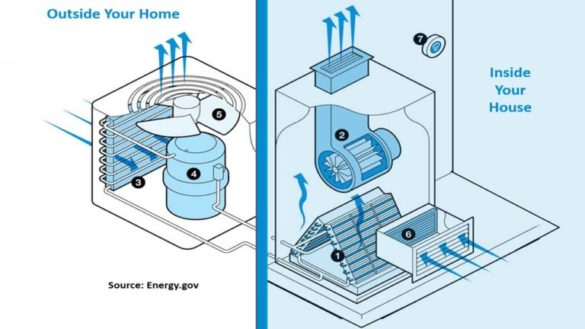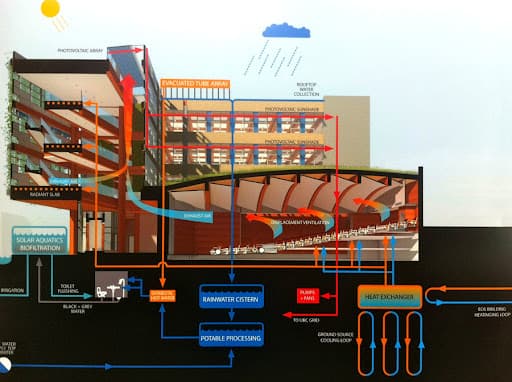The Complete Look at Your Home's Plumbing System Anatomy
The Complete Look at Your Home's Plumbing System Anatomy
Blog Article
Have you been in search of related information on Anatomy of a House: Understanding the Components?

Understanding exactly how your home's pipes system works is necessary for every house owner. From providing tidy water for drinking, food preparation, and bathing to securely eliminating wastewater, a well-kept pipes system is vital for your family members's health and wellness and convenience. In this thorough guide, we'll discover the intricate network that makes up your home's plumbing and deal pointers on maintenance, upgrades, and dealing with typical problems.
Intro
Your home's pipes system is greater than simply a network of pipes; it's a complex system that ensures you have accessibility to clean water and reliable wastewater removal. Understanding its parts and just how they work together can aid you prevent costly repair work and make sure every little thing runs efficiently.
Basic Parts of a Pipes System
Pipelines and Tubes
At the heart of your pipes system are the pipelines and tubes that bring water throughout your home. These can be constructed from various materials such as copper, PVC, or PEX, each with its advantages in terms of resilience and cost-effectiveness.
Fixtures: Sinks, Toilets, Showers, etc.
Fixtures like sinks, bathrooms, showers, and bath tubs are where water is made use of in your house. Recognizing just how these components link to the pipes system aids in detecting troubles and intending upgrades.
Shutoffs and Shut-off Points
Valves control the flow of water in your plumbing system. Shut-off valves are essential during emergencies or when you require to make fixings, permitting you to separate parts of the system without interfering with water circulation to the whole home.
Supply Of Water System
Main Water Line
The main water line connects your home to the municipal water supply or a personal well. It's where water enters your home and is distributed to numerous components.
Water Meter and Pressure Regulator
The water meter measures your water use, while a stress regulator ensures that water flows at a secure stress throughout your home's plumbing system, preventing damages to pipes and fixtures.
Cold Water vs. Hot Water Lines
Recognizing the difference in between cold water lines, which supply water straight from the primary, and hot water lines, which lug warmed water from the hot water heater, aids in fixing and planning for upgrades.
Drainage System
Drain Pipes Water Lines and Traps
Drain pipelines carry wastewater far from sinks, showers, and bathrooms to the sewer or septic system. Catches avoid sewer gases from entering your home and likewise trap particles that can create clogs.
Air flow Pipes
Air flow pipes permit air into the water drainage system, stopping suction that could slow down drainage and create catches to empty. Correct ventilation is important for keeping the integrity of your pipes system.
Value of Proper Drain
Ensuring appropriate drainage stops backups and water damages. Routinely cleansing drains and preserving catches can avoid pricey repair services and expand the life of your plumbing system.
Water Heater
Types of Water Heaters
Hot water heater can be tankless or traditional tank-style. Tankless heating units warm water as needed, while containers store heated water for immediate use.
Updating Your Plumbing System
Reasons for Updating
Updating to water-efficient fixtures or changing old pipelines can improve water high quality, decrease water expenses, and increase the value of your home.
Modern Pipes Technologies and Their Advantages
Explore innovations like clever leak detectors, water-saving commodes, and energy-efficient water heaters that can save cash and lower environmental effect.
Cost Considerations and ROI
Compute the upfront expenses versus lasting financial savings when considering plumbing upgrades. Several upgrades spend for themselves through minimized energy expenses and fewer repairs.
How Water Heaters Link to the Pipes System
Comprehending just how hot water heater connect to both the cold water supply and hot water distribution lines assists in identifying problems like inadequate warm water or leakages.
Upkeep Tips for Water Heaters
Routinely flushing your water heater to remove sediment, checking the temperature settings, and checking for leakages can prolong its life expectancy and improve energy efficiency.
Common Plumbing Problems
Leaks and Their Causes
Leakages can take place as a result of maturing pipelines, loosened installations, or high water pressure. Attending to leaks quickly avoids water damage and mold and mildew development.
Obstructions and Obstructions
Clogs in drains and bathrooms are commonly brought on by purging non-flushable items or an accumulation of grease and hair. Using drain screens and bearing in mind what goes down your drains pipes can prevent clogs.
Indications of Pipes Issues to Watch For
Low tide stress, slow-moving drains pipes, foul odors, or unusually high water bills are indicators of prospective plumbing issues that need to be resolved without delay.
Pipes Maintenance Tips
Routine Assessments and Checks
Schedule yearly pipes examinations to capture issues early. Look for indicators of leaks, rust, or mineral accumulation in taps and showerheads.
Do It Yourself Upkeep Tasks
Easy tasks like cleansing faucet aerators, looking for bathroom leaks making use of color tablet computers, or shielding subjected pipelines in chilly environments can avoid significant plumbing issues.
When to Call a Professional Plumber
Know when a pipes concern requires specialist competence. Attempting intricate repair work without correct understanding can lead to more damages and higher repair prices.
Tips for Decreasing Water Use
Easy routines like repairing leakages promptly, taking shorter showers, and running complete lots of laundry and meals can preserve water and reduced your utility expenses.
Eco-Friendly Pipes Options
Consider sustainable pipes materials like bamboo for floor covering, which is durable and environmentally friendly, or recycled glass for counter tops.
Emergency situation Preparedness
Steps to Take Throughout a Pipes Emergency
Know where your shut-off valves lie and just how to turn off the water system in case of a ruptured pipe or major leakage.
Value of Having Emergency Situation Contacts Useful
Maintain call info for regional plumbing technicians or emergency services conveniently offered for quick reaction during a plumbing situation.
Environmental Effect and Preservation
Water-Saving Components and Appliances
Mounting low-flow faucets, showerheads, and commodes can significantly minimize water usage without compromising efficiency.
Do It Yourself Emergency Fixes (When Relevant).
Short-lived fixes like using air duct tape to spot a dripping pipeline or putting a container under a leaking faucet can minimize damages till a specialist plumber arrives.
Conclusion.
Understanding the makeup of your home's plumbing system empowers you to maintain it properly, conserving money and time on repair services. By adhering to routine upkeep regimens and remaining notified about modern pipes innovations, you can ensure your plumbing system runs successfully for years to find.
HOW YOUR PLUMBING SYSTEM WORKS
Which Pipes Do What?
Blue lines = fresh water supply entering the building Red lines = hot water supply entering the building Grey lines = pipes carrying waste away from the building and venting pipes carrying gases away from the building (through the roof) YOUR MAIN PLUMBING SYSTEMS
There are two main plumbing systems that support your home s basic plumbing needs one that brings clean water into your home, and one that sends dirty water away from your home. Connected to the toilet, bath, shower, and other faucets in your home, these two systems keep your water flowing in the right directions.
ACCESSING FRESH WATER
Fresh and clean water is brought into your home through the main water supply line . Filtered through one pipe, this water is pressured to flow into the various fixtures in your home at any given time.
This water can be sourced from a well located on your property, a pond or river (mostly cottages), or, as in most cases, from the city s municipal water treatment centre. However, it is important to note that water that is untreated, such as the water siphoned from ponds or rivers, may not be safe to drink. Personal water supplies always need to be treated for hardness and contaminants before consumed.
MUNICIPAL WATER SUPPLIES
Improve taste and odour Remove sediment Eliminate hardness Reduce chlorine COLD WATER SUPPLY VS. HOT WATER SUPPLY
Cold water flows into your home or building through the service line, which then distributes hot or cold water to your fixtures. This line is most commonly run through a central column that runs floor to floor. Hot water runs in short and straight pipes as the longer the pipeline, the more heat that will be lost in the transfer. Having shorter pipes also allows residents to access hot water more quickly.
WASTE WATER SYSTEM
Your wastewater system is divided into two parts pipes that send wastewater away from your home and venting pipes that send sewer gas away from your home. Sewage water travels through pipes that flush the water and waste towards local sewers that are operated and managed by your city or town. Most sewer systems rely on gravity to move the wastewater to where it needs to go.
The further away from your toilet or sink, the larger wastewater pipes become. This allows for waste to be disposed of from various parts of your home or business at once without pipe blockages. The angle and flow of these pipes are also essential for keeping your waste pipes clear of build up.
https://harrisplumbing.ca/how-your-home-plumbing-system-works/

Do you appreciate more info about Understanding Your Home's Plumbing Anatomy? Try leaving feedback further down. We would be glad to hear your feelings about this blog. We hope that you visit us again in the near future. Enjoyed our write-up? Please quickly share it. Let someone else check it out. We thank you for reading our article about .
Go Deal Now Report this page